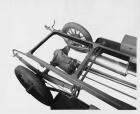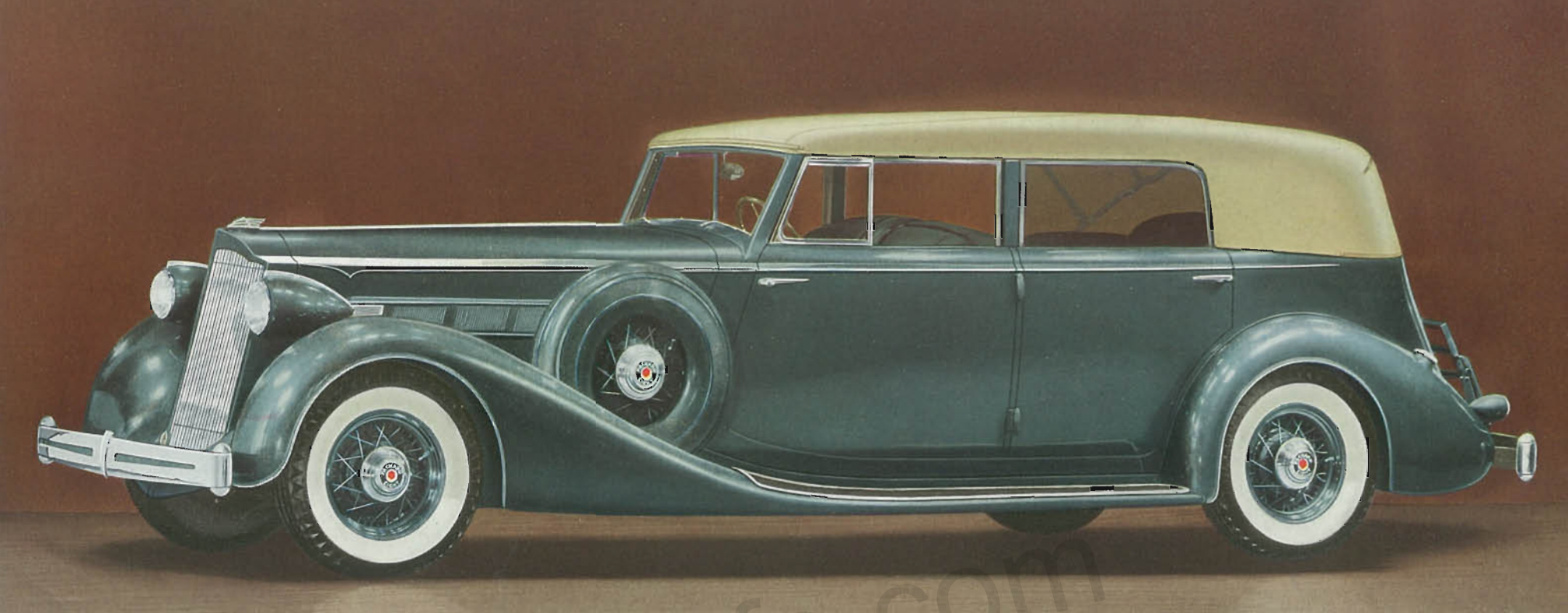|
Re: Engine flush
|
||||
|---|---|---|---|---|
|
Forum Ambassador

|
The problem with flushing is you run the risk of loosening debris but not totally removing it such that it subsequently can circulate thru the engine and do harm. Far better is to drop the oil pan and clean it as well as the pump intake screen and whatever else is within reach.
Posted on: 2016/1/17 11:44
|
|||
|
||||
|
Re: Engine flush
|
||||
|---|---|---|---|---|
|
Home away from home
|
Good afternoon PTV...Owen is right! You might also remove the valve covers and clean out as much old build up as you can. Then change the oil and filter every 100 miles for about three cycles or so. Then follow the book or once a year, which ever comes first. Ernie
Posted on: 2016/1/17 16:14
|
|||
|
Caretaker of the 1949-288 Deluxe Touring Sedan
'Miss Prudence' and the 1931 Model A Ford Tudor 'Miss Princess' 
|
||||
|
||||
|
Re: Engine flush
|
||||
|---|---|---|---|---|
|
Home away from home
|
That is one item I would like to add to the engine is an oil filter. I has none on it right now. Even though they are only partial flow type, it should help some.
John
Posted on: 2016/1/17 16:34
|
|||
|
||||
|
Re: Engine flush
|
||||
|---|---|---|---|---|
|
Webmaster
|
Drop the pan, clean the screen. As you don't know if rodents may have gotten into the pan or other debris. I've seen it before and I had a couple of wayward valve keepers in the pan that some mechanic must have dropped.
My car sat for 20 years. So there was a lot of goop in the pan that I had to scrape out. I also replacing a couple of quarts of ATF in place of a couple of quarts of oil and ran the engine through several (15+) warm up, cool down cycles in the garage. This flushed a ton of crap out of the motor. Then drained, and refilled with fresh oil. I use 15-40 Diesel oil, but everyone has there own preference.
Posted on: 2016/1/23 19:11
|
|||
|
-BigKev
1954 Packard Clipper Deluxe Touring Sedan -> Registry | Project Blog 1937 Packard 115-C Convertible Coupe -> Registry | Project Blog |
||||
|
||||
|
Re: Engine flush
|
||||
|---|---|---|---|---|
|
Home away from home

|
Dropping pan as mentioned above seems best but it depends on practical limitationes - physical, Economic, etc. if you were using that as a last resort it would depend on if the engine was fully rebuilt. Sitting years ? How many? 5-7? Reman 10 ago and sat 9? Never torn down and sat twenty? Pull the lifter cover n look. This may determine your path.
Posted on: 2016/1/23 20:28
|
|||
|
||||
|
Re: Engine flush
|
||||
|---|---|---|---|---|
|
Webmaster
|
I dropped the pan on my '54 using a couple of jackstands, a piece of 2x4 and a jack. Pain in the arse. But doable. I recommend the one-piece pan gasket. It makes things much easier on the install.
Posted on: 2016/1/23 20:31
|
|||
|
-BigKev
1954 Packard Clipper Deluxe Touring Sedan -> Registry | Project Blog 1937 Packard 115-C Convertible Coupe -> Registry | Project Blog |
||||
|
||||
|
Re: Engine flush
|
||||
|---|---|---|---|---|
|
Home away from home
|
First you fellows have to quit making it snow.... LOL.
Sounds like dropping the pan is the right thing. Do you need to have the crank turned a certain way for clearance? John
Posted on: 2016/1/23 21:33
|
|||
|
||||
|
Re: Engine flush
|
||||
|---|---|---|---|---|
|
Home away from home
|
I also have a 51 200 with a 288. After I bought it, drove it for a while, and then decided I better check the pan. I put the car up on jack stands and removed all the zillion pan bolts. The ones by the transmission take some investigation to find, especially if the typical oil gunk is on it. Cheap cooking oil from Walmart is a pretty good solvent for the gunk - you don't get loopy using it, and it keeps your hands soft. And cheap and easy to wipe off with paper towels. The tie rod has to be loosened and/or removed, and the crank will probably have to be rotated some unless you have led a very good life. I'm betting that you will probably find at least a quart of crud in the oil pan - just be sure to soak the oil strainer in kerosene or gasoline (outside the garage) before you hook it back up. Check the pan flanges with a good straight edge to see if they are smooth. If not, tap the flanges using an anvil and a small ball peen hammer. It doesn't take much to straighten the flanges back out.
When you put the new pan gasket on, I like to use fairly tacky sealant on the pan only. Let the gasket dry a few minutes, then put the pan back on, taking care to not to move the gasket out of position. (note - this will happen, so just keep an eye out for the slips. By not putting gasket compound on the block, you should be able to reuse the gasket the next time you drop the pan. Packard used to recommend that the pan be cleaned out annually, but this a bit extreme with modern oils. Then start reinstalling the bolts, alternating from one side to another and front to back. I usually use a 1/4 inch socket set with a 12" extension. The 1/4" is so that I don't put too much torque on the bolts, and the extension to just make it easy to clear the obstacles. I also like to use a magnetic holder in the socket, as the bolts are small and easy to drop. Check the bolts after driving for a hour or so for leaks. They will probably need a little bit of snugging up (maybe a quarter turn) but don't get carried away and squash the gasket or bend the pan flanges. It's not a bad job, and it will help save on the engine wear. Also, I wouldn't worry about not having an oil filter unless you are planning on making this car a daily driver or plan on a lot of long trips. Just change the oil every year when you put the car away for the winter.
Posted on: 2016/1/23 22:19
|
|||
|
||||
|
Re: Engine flush
|
||||
|---|---|---|---|---|
|
Home away from home
|
Good advice from David. I would just like to add one more suggestion: A light coating of grease on the engine side of the oil pan gasket. This will allow the gasket to slide on the engine easier when reinstalling the pan and help prevent damaging the gasket.
(o{}o)
Posted on: 2016/1/24 13:07
|
|||
|
We move toward
And make happen What occupies our mind... (W. Scherer) |
||||
|
||||








